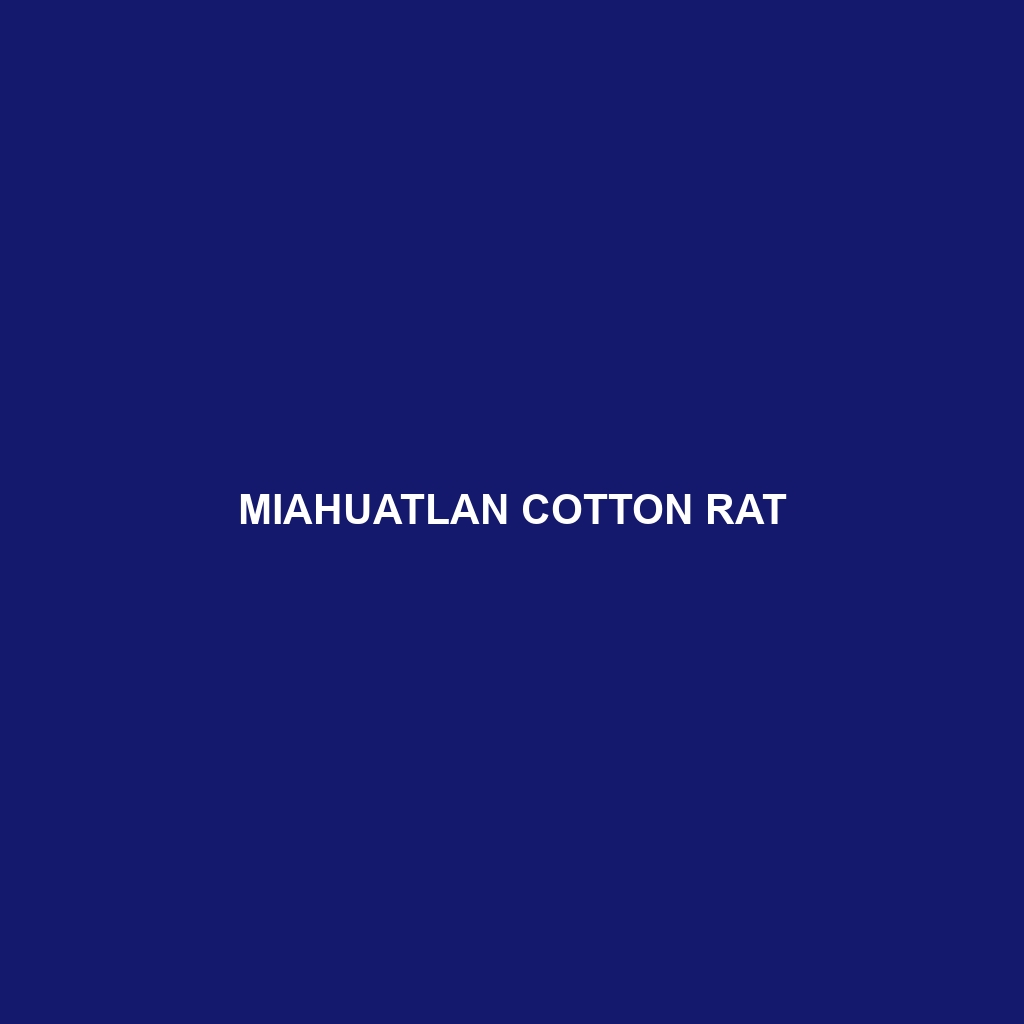Miahuatlan Cotton Rat
Common Name: Miahuatlan Cotton Rat
Scientific Name: Sigmodon hirsutus
Habitat
The Miahuatlan Cotton Rat is primarily found in the mountainous regions of southern Mexico, specifically within the Sierra Madre del Sur. This rodent thrives in grassland habitats, often near water sources such as streams and rivers, where it can easily construct its burrows. These areas are characterized by dense vegetation and a mix of open grasslands, making it an ideal environment for the species.
Physical Characteristics
Miahuatlan Cotton Rats are medium-sized rodents, typically measuring between 20 to 30 centimeters in length, including their tail. They have a distinctive sandy-brown fur with a lighter underbelly, which helps them blend into their grassland habitats. Their bodies are robust, with short legs and large, rounded ears, giving them a characteristic appearance. Notably, they possess sharp, chisel-like incisors that aid in gnawing through tough plant material.
Behavior
The behavior of Miahuatlan Cotton Rats includes being primarily nocturnal, which means they are most active during the night. These social animals are often found in small groups, building complex burrow systems to escape predators and store food. They are quite territorial and often display aggressive behaviors towards intruders. Their ability to adapt to various habitats contributes to their resilience in changing environments.
Diet
Miahuatlan Cotton Rats are herbivorous, with a diet that predominantly consists of grasses, seeds, and various types of leaves. They are known to forage at night, which minimizes the risk of predation and helps them avoid daytime heat. Their feeding habits play an essential role in seed dispersal, contributing to the health of their ecosystem.
Reproduction
Breeding for the Miahuatlan Cotton Rat typically occurs during the rainy season, from May to August. Females can give birth to up to six offspring per litter after a gestation period of about 25 days. The young are weaned at approximately three weeks and become independent shortly thereafter. This rapid reproductive rate is crucial for maintaining population levels in their natural habitats.
Conservation Status
The Miahuatlan Cotton Rat is currently classified as ‘Vulnerable’ due to habitat loss from agricultural expansion and urban development. Conservation efforts are essential to ensure the survival of this unique species, as its population is threatened by these environmental changes.
Interesting Facts
One fascinating aspect of the Miahuatlan Cotton Rat is its ability to swim, which they often do to escape predators or cross rivers. They exhibit a unique social structure that allows them to maintain complex relationships within their communities, providing insight into their behavioral ecology.
Role in Ecosystem
In its ecosystem, the Miahuatlan Cotton Rat plays a critical role as both a herbivore and prey. By consuming a variety of plants, it helps regulate vegetation growth, which in turn supports various other wildlife species. As a prey species, it serves as an essential food source for larger predators, thus maintaining the food web balance in its habitat.
